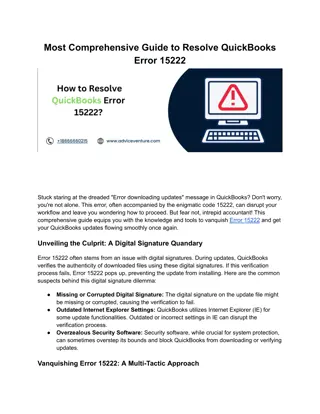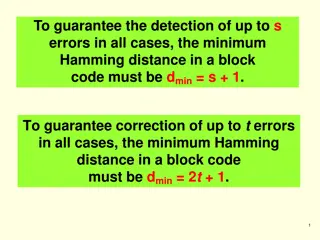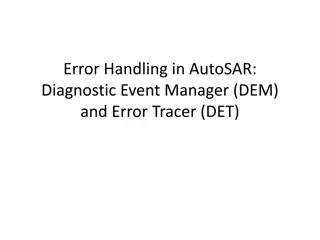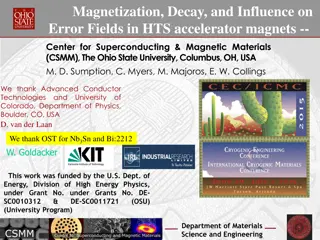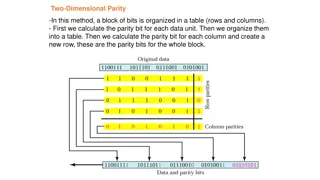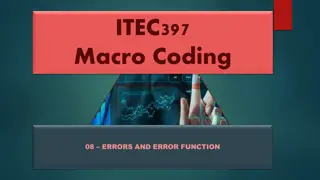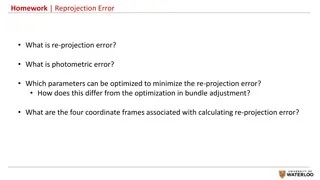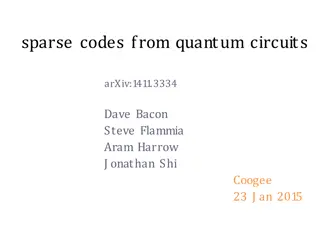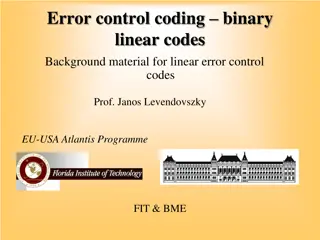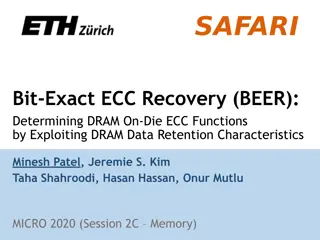
Error Detection and Redundancy in Computer Networks
"Learn about error detection techniques and the concept of redundancy in computer networks. Understand how data integrity is maintained through error detection mechanisms like single-bit error and burst error detection. Explore the role of redundancy in ensuring accurate data transmission."
Download Presentation

Please find below an Image/Link to download the presentation.
The content on the website is provided AS IS for your information and personal use only. It may not be sold, licensed, or shared on other websites without obtaining consent from the author. If you encounter any issues during the download, it is possible that the publisher has removed the file from their server.
You are allowed to download the files provided on this website for personal or commercial use, subject to the condition that they are used lawfully. All files are the property of their respective owners.
The content on the website is provided AS IS for your information and personal use only. It may not be sold, licensed, or shared on other websites without obtaining consent from the author.
E N D
Presentation Transcript
9 Computer Networks Chapter Seven DATA LINK LAYER Error Detection (Part I) Asst. Prof. Dr. Mazin S. Al-Hakeem
Error Detection Redundancy
Error Detection Networks must be able to transfer data from one device to another with acceptable accuracy. For most applications, a system must guarantee that the data received are identical to the data transmitted. Any time data are transmitted from one node to the next, they can become corrupted in passage. Many factors can alter one or more bits of a message. Some applications require a mechanism for detecting and correcting errors.
8.1- Types of Errors Single-Bit Error The term single-bit error means that only 1 bit of a given data unit (such as a byte, character, or packet) is changed from 1 to 0 or from 0 to 1. Burst Error The term single-bit error means that only 1 bit of a given data unit (such as a byte, character, or packet) is changed from 1 to 0 or from 0 to 1.
8.2- Redundancy The central concept in detecting or correcting errors is redundancy. To be able to detect or correct errors, we need to send some extra bits with our data. These redundant bits are added by the sender (Generator) and removed by the receiver (Checker). Their presence allows the receiver to detect or correct corrupted bits. The Structure of Encoder and Decoder
Computer Networks Chapter Seven DATA LINK LAYER Error Detection (Part I) Asst. Prof. Dr. Mazin S. Al-Hakeem






